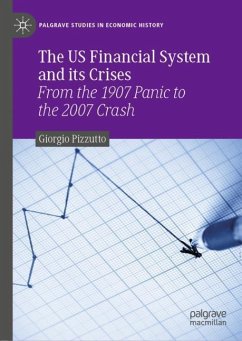Looking at the precedents set by the panic of 1907 and the Great Depression in America, this book investigates the causes of the 2007-2008 financial crisis. Pizzutto examines the effects of monetary policy, as well as of expanding and contracting financial cycles, in order to analyze the breakdown of the money market and capital market circuits. Not only exploring the impact of the Federal Reserve and central banking on monetary policy, he also analyzes the role of non-bank financial intermediaries.
How can monetary policy resolve the instability of the US financial system? How can financial intermediation work effectively? This timely book highlights how historical lessons can be used to avoid the next financial crisis.
How can monetary policy resolve the instability of the US financial system? How can financial intermediation work effectively? This timely book highlights how historical lessons can be used to avoid the next financial crisis.









